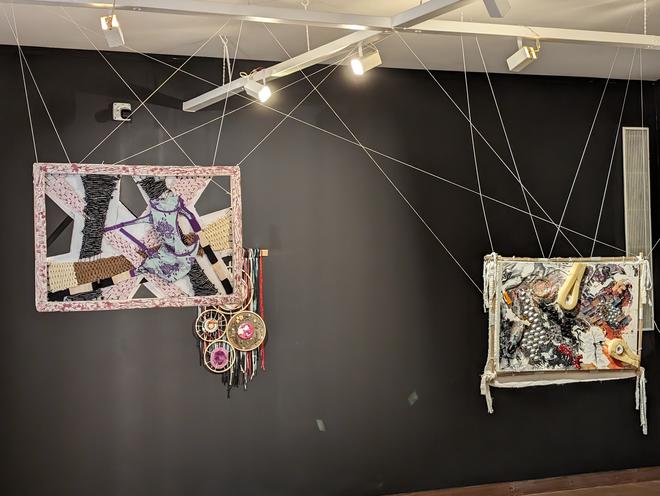Gender and art intersect at Kochi gFest, a travelling ‘festival’ that brings together artists and the arts, across practices, at the Kerala Museum. It aims at initiating a dialogue about art, gender and diverse, related perspectives and preoccupations.
As part of the fest, an art show, a series of series of talks, panel discussions, interactive workshops, and forms of creative expression are on. .

The gFest art show, spread over the multiple galleries of the spacious Kerala Museum, is refreshingly thought-provoking. The three-month festival is being hosted by the Kerala Museum with reFrame Institute of Art and expression, in association with Raising Our Voices Foundation and Muthoot Finance. All exhibiting artists are recipients of Genderalties, a grant instituted by reFrame.
Conceptualised by activist, documentary filmmaker and mixed media artist Vani Subrahmanian, reFrame, according to its website, “is an initiative that produces, mentors and disseminates artistic efforts that respond to contemporary challenges.”
It is a complex show, the works of 22 women artists and artists’ collectives delve into their intersecting and overlapping identities as individuals and social/political beings. For example mixed/multimedia artist Natasha Chandhock’s installations position themselves where her identities as queer and a person with disabilities intersect.

The objects of everyday express her feelings — pain and angst. Watching the mixed media work, collage-like framed objects mounted on the walls one gets an idea of her endurance as much as her resistance negotiating her way in an ‘abled’ world. Medical scans, masks, a variety of bandages and other ‘equipment’ disturb the status quo in terms of our expectations from art.
Her safe space is a dream catcher.
The women artists express the many complexities of being a woman as an artist. Reshma Khatoon’s Invisible Women, a collaborative project by Reshma, Anshu Jakhar, Swagatika Bhoi, Annie Pervez and Sahiba Saifi — shows the women reclaiming identity as artists, their practice and its evolution. The narrators are photographs, a video, books, calligraphy, embroidery and paintings. The ‘prompt’ for the works is oftentimes deeply personal. The quotidian acquires an artistic sheen.
If we see the woman as an individual, as a contributing member of society, then we also see her as a member of a collective bringing change. As on the panels of the graphic novel Reserved by the Storyboard Collective which juxtapositions the past and the present.
The past of women fishworkers of Thiruvananthapuram in the late 1970s have been placed alongside the recent reality of their grandchildren wrestling with patchy technology of studying during a pandemic. Stigmatised and denied access to public transport because of their ‘smelly’ merchandise, the older women suffered economically too. They mobilised in 1978, launching a protest demanding access to public transport. Finally, in 1981, the government gave them a bus exclusively. Mercy Alexander of Sakhi Women’s Resource Center, who was part of the protest, also spoke at an allied event held alongside.
Fatima Junaid’s hard hitting photographs that make up Taaro’n ke Darmeyan (loosely translated to mean among the stars) takes us through the lives of Lucknow’s mukaish workers. Mukaish is metal embroidery (silver or gold colour) used to embellish garments. The women who make the ‘stars’ themselves live in decrepity, which Fatima captures tellingly.
One of the most striking works, a multimedia installation, on display is that of the Dhaarchidi Collective of Himachal Pradesh’s Kangra district called Pahadaan da Laan. Composed of women in their 20s, the project involved intergenerational research, which included speaking to their mothers, grandmothers, and friends to understand how they perceived shared experiences from caste to marriage, or the whispered topics related to gender and sexuality.
While there are photographs and videos, the most striking is the gardi (cloth/blanket woven by Gaddi women) with its ‘windows’ (flaps) under which are embroidered concerns/stories of women’s lives. Though it may appear highly localised, it is relatable.
What sets the show apart is the diversity of creative expression — graphic art, painting, photography, video and audio installations, books, needlework, calligraphy, weaving — under one roof. The stories at the show may be diverse geographically, almost foreign, but not without resonance.
gFest concludes on May 5.







